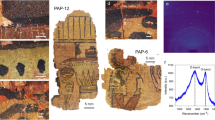Play all audios:

ABSTRACT SOME time ago when developing an X-ray photograph I observed the effect noticed by your correspondent in your last issue. Very little of the silver salt had been affected, and the
plate, after development, when put into alum solution lit up as described. I have often watched for the same effect since with ordinary negatives; sometimes there is phosphorescence,
sometimes not. Apparently a fairly long development with the pyro soda is necessary. Not only the plate itself, but the used developer will give the phosphorescence with alum solution.
Dilute sulphuric acid may be used instead of the alum. Quinine sulphate or hydrochloride does not light up when the used developer is added, but will do so if a few drops of sulphuric acid
are subsequently introduced. Printing out paper may sometimes be successfully used instead of the plate, or the experiment may be still more easily made by mixing potassium bromide and
silver nitrate solutions, in dim, gaslight, decanting, and shaking up the resulting silver bromide with pyro soda. A red liquid results which gives the lighting up effect when poured into
alum solution or dilute sulphuric acid. Access through your institution Buy or subscribe This is a preview of subscription content, access via your institution ACCESS OPTIONS Access through
your institution Subscribe to this journal Receive 51 print issues and online access $199.00 per year only $3.90 per issue Learn more Buy this article * Purchase on SpringerLink * Instant
access to full article PDF Buy now Prices may be subject to local taxes which are calculated during checkout ADDITIONAL ACCESS OPTIONS: * Log in * Learn about institutional subscriptions *
Read our FAQs * Contact customer support SIMILAR CONTENT BEING VIEWED BY OTHERS ILLUSTRATING PAPYRUS IN ANCIENT EGYPT Article Open access 10 January 2023 GENESIS AND INFLUENCING FACTORS OF
THE COLOUR OF CHRYSOPRASE Article Open access 11 May 2021 STRUCTURAL COLORS OF PEARLS Article Open access 27 July 2021 AUTHOR INFORMATION AUTHORS AND AFFILIATIONS * Heaton, Newcastle-on-Tyne
H. J. EDWARDS Authors * H. J. EDWARDS View author publications You can also search for this author inPubMed Google Scholar RIGHTS AND PERMISSIONS Reprints and permissions ABOUT THIS ARTICLE
CITE THIS ARTICLE EDWARDS, H. Phosphorescence of Photographic Plates. _Nature_ 69, 272 (1904). https://doi.org/10.1038/069272c0 Download citation * Issue Date: 21 January 1904 * DOI:
https://doi.org/10.1038/069272c0 SHARE THIS ARTICLE Anyone you share the following link with will be able to read this content: Get shareable link Sorry, a shareable link is not currently
available for this article. Copy to clipboard Provided by the Springer Nature SharedIt content-sharing initiative
